‘Cholesterol in egg prevents heart disease, breast cancer’
One out of every six people in Africa suffers mental disorder – WHO
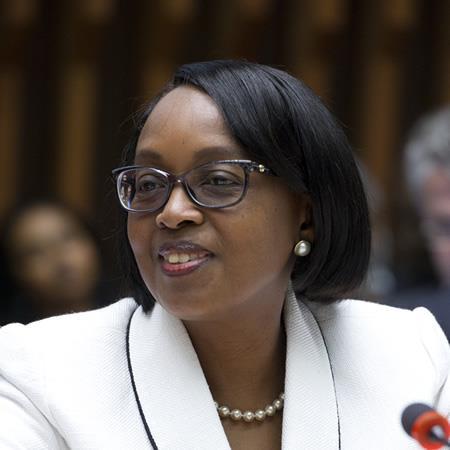
This was contained in a press statement issued in Abuja by Charity Ahrey, the Communications Officer of WHO, to commemorate the World Mental Health Day.
19m children blind globally – Opthamologist
 Adido, who disclosed to newsmen in Ilorin, the Kwara State capital, on Saturday, noted that children and the aged were usually vulnerable to eye diseases in Nigeria.
Adido, who disclosed to newsmen in Ilorin, the Kwara State capital, on Saturday, noted that children and the aged were usually vulnerable to eye diseases in Nigeria.ERA/FoEN, groups accuse Wilmar of land grab in Cross River
The Environmental Rights Action/Friends of the Earth Nigeria (ERA/FoEN), civil society groups and communities impacted by oil palm companies in Cross River State have described as worrisome, the influx of oil palm companies in the state and their expansion activities which they have described as “land grab in its most brazen form.”

At an advocacy meeting in Calabar (the Capital of Cross River State) last week which had in attendance communities impacted by the PZ Cussons/Wilmar land grab, the groups resolved to mobilise, resist and take action to protect lands that they felt are under siege from Wilmar and oil palm companies activities that are systematically pushing locals out of their patrimony.
The Wilmar oil palm plantation impacted communities include Betem/Ehom, Akpet and Idoma communities from Biase Local Government Area (LGA) and Mbarakom/Uwet/Njagachang and Mfanosing/Aningeje from Akamkpa LGA.
In a communique issued at the end of the meeting, the groups insist that Wilmar had not only short-changed them, but has also embarked on divide and rule to keep them in a perpetuity of servitude.
ERA/FoEN Executive Director, Godwin Uyi Ojo, said: “It is disheartening that Wilmar has become the face of land grab in Cross River State employing various tactics to make profits while keeping the typical forest communities under its boots.”
Ojo alleged that Wilmar signed a Memorandum of Understanding (MOU) in 2011 with the state government wherein it was agreed that community assistance programmes such as road construction, provision of primary and secondary schools, health centres, portable water electricity and employment would be provided.
He stated that many communities insist that although they were told that an MOU exists, they have neither seen the document nor made aware of the contents of the agreement, “especially how it affects their community”.
According to him, other communities allege that Wilmar has made promises to them on employment of at least 20,000 workers and the building of a refinery but has failed to honour any as many workers earn a meagre N10,000 or less, far below the national minimum wage of N18,000.
“We are worried about Wilmar’s attempts to divide the communities through a capture of the elite, some government officials and chiefs on the one hand and ordinary community members, as a strategy of engendering divergence in views.”
One of such instance, Ojo pointed to, is a letter purportedly written by some chiefs that the communities gave their Free, Prior and Informed Consent (FPIC) to the actions and activities the company was undertaking on community land, and that an Environmental Impact Assessment (EIA) had been conducted, published and made available to all communities.
“We join our voices with that of the communities demanding that Wilmar desist from deliberately dividing the community to avoid conflicts among community members and between different communities,” he demanded.
He also advocated that the state government set in motion the process to review agreements allegedly signed between it and Wilmar on behalf of the communities and ensure that all impacted communities and civil society groups are part of an open, transparent and inclusive review process.
Ojo urged Wilmar to immediately stop the “slave labour” and instead properly negotiate wages with the workers.
Nigeria chairs committee as Adaptation Fund Board approves more projects
As adaptation demand grows, the AFB moves ahead with green light from evaluation report
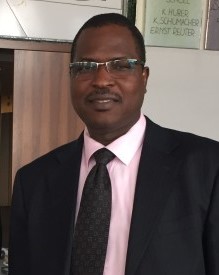
The Adaptation Fund Board (AFB) has considered a record number of project and programme applications, approving three full project proposals and five preliminary projects, for a total of over $12.4 million. The Board is also expanding its scope of operations, making decisions on regional projects for the first time alongside national adaptation projects.
This is coming even as Nigerian Peter Tarfa was made Chair of the Project Programme Review Committee (PPRC) of the AFB.
A couple of months ago, Tarfa, along with Ms. Yuka Greiler from Switzerland (who is representing Western European and other Groups), was elected during the 25th Meeting of the AFB (AFB25) in Bonn, Germany to the posts of Vice Chair and Chair of the PPRC respectively.
But at the 26th Meeting (AFB26) that also held in Bonn from October 8-9, 2015, the Board elevated Tarfa to be Chair of the PPRC from Vice Chair. Among other duties, Tarfa will be responsible for evaluating and recommending submitted project and programme proposals to the Board for approval.
An observer described the development as “a critical position and an added feather for Nigeria in international climate diplomacy.”
Last week in Bonn, the Board also decided to accredit the Central American Bank for Economic Integration (CABEI) as a Regional Implementing Entity (RIE) of the Adaptation Fund, making it the 5th regional accredited entity, and joining the 20 national, and 12 multi-national accredited bodies who partner with the Fund.
“The unprecedented number of proposals to the Fund shows the huge demand for action on adaptation to climate change – and confirms the increasing relevance of the Adaptation Fund,” said Hans Olav Ibrekk, Chair of the AFB.
“The independent evaluation report on our work shows that we are really delivering on our mandate. We have a track record of supporting projects that build the resilience of some of the world’s poorest people against the impacts of climate change. We have a strong pipeline of projects for the future. Now we urgently need to make sure that we have the financial resources to match that demand.”
Decisions taken at the 26th Adaptation Fund Board meeting included:
- Approving a project proposal, Enhancing resilience to climate change of the small agriculture in the Chilean region of O’Higgins from the Chilean International Cooperation Agency for $9.96 million
- Approving two project proposals from the Indian National Bank for Agriculture and Rural Development (NABARD), Climate proofing of watershed development projects in the states of Rajasthan and Tamil Nadu for $1.34 million, and Climate Smart Actions and Strategies in North Western Himalayan Region for Sustainable Livelihoods of Agriculture-Dependent Hill Communities for nearly $1 million
- Endorsing two concept proposals from the Indian National Bank for Agriculture and Rural Development (NABARD), and the Centre de Suivi Ecologique in Senegal, funding a total of $60.000
- Endorsing four pre-concept proposals under the new pilot programme for regional projects for a total of $80.000
- Accrediting the Central American Bank for Economic Integration (CABEI) as a Regional Implementing Entity (RIE) of the Adaptation Fund
Welcoming the positive findings of the independent evaluation report on the Fund, which stressed the Fund’s relevance, effectiveness and efficiency.
The AFB also further considered how to build synergies with the Green Climate Fund (GCF), mandating its Secretariat to continue discussions with the GCF, and requesting clarification from the Conference to the Parties to the Kyoto Protocol (the reporting body for the Fund) about the Board’s mandate to take decisions on inter-Fund relations.
The Adaptation Fund was established under the Kyoto Protocol of the UN Framework Convention on Climate Change (UNFCCC), and has committed $330 million in 50 countries since 2010 to climate adaptation and resilience activities. To date, 51 projects have been approved with the majority in the implementation stage.
Planners to explore cities’ functionality at Ilorin forum
Bothered by the fact that Nigerian cities may have failed to provide for and promote an environment sustainable for living, work and recreation, settlement development practitioners have taken up a campaign to address the unsavoury situation.
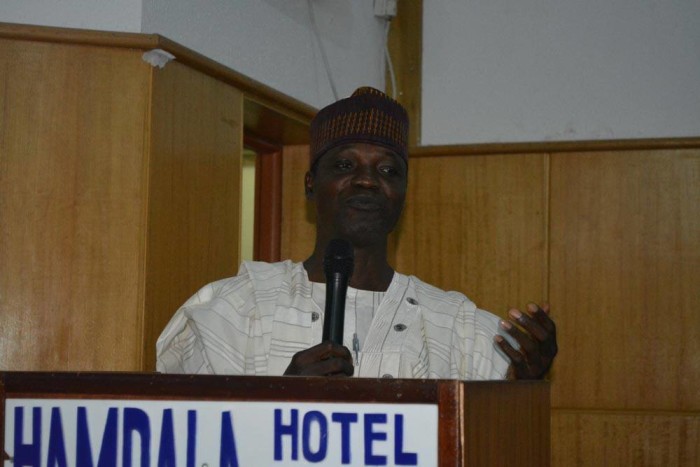
Under the aegis of their umbrella association – the Nigerian Institute of Town Planners (NITP), the city planners are using the occasion of their yearly meeting and conference to beam a light on the issue. The 46th Conference and Annual General Meeting (AGM) of the NITP has “Making Cities in Nigeria Functional” as its theme, and will hold in Ilorin, Kwara State October 27th to 30th, 2015.
Apart from taking stock of developments in the profession as well as welfare of the practitioners, the conference will attempt an overview of the functionality element of cities with a view to making them facilitate growth and development.
Chairman, Organising Committee and First National Vice-President of the NITP, Luka Achi, said: “The focus of this year’s theme is on making settlements in Nigeria functional. The human settlement is expected to provide and promote an environment suitable for sustainable living, work and recreation. In Nigeria, this dream has continued to be an illusion as settlements of various sizes and characteristics exhibit elements of disjointed and dysfunctional space use and inter-relationship.
“The impact of this can be observed in the absence of physical plans, poor transportation and related services, absence of social amenities and services and a general neglect of the socially disadvantaged group of the society. Where these plans exist, they are either distorted or not complied with.”
According to Mr. Achi, settlements are the centres of human survival and progress. “These investment, social development and cultural imprints evolve over time. The role of Planning is to ensure that these elements of human settlement progression are promoted through plans and development and control so as to ensure conduciveness, progress and fairness to all; and are sustained in the interest of future generations,” he added.
National Publicity Secretary of the NITP, Effiong Akpan, stated: “The goal of this year’s conference is to take an overview of the functionality elements of our cities with a view to exploring the application of physical planning strategies so as to make them functional and thereby facilitate growth and development of the human settlement in all its ramifications. To this extent, a practical experience sharing by the relevant stakeholders will be an added dimension to this programme.”
Nationa Secretary, Alex Ogbodo, stressed: “In fulfilling one of its objectives of traing and dissemination of information on the profession, the Institute organises National Conference and AGM every year during which issues of national importance and relevance are discussed, and recommendations are forwarded to government and other stakeholders for consideration and implementation with a view to facilitating organised growth and development in our nation.”
IPCC elects Bureau for Sixth Assessment Report
The Intergovernmental Panel on Climate Change (IPCC) completed the election of its new Bureau on Thursday, after electing Hoesung Lee of the Republic of Korea as its new Chair on Tuesday.
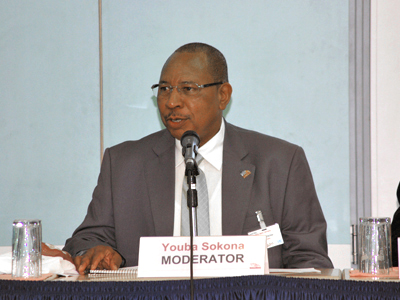
The new Bureau, which consists of 34 members, up from 31 in the previous Bureau, will lead the Panel as it works on the forthcoming Sixth Assessment Report. Members are drawn from all six of the IPCC’s regions, and include eight women, compared with five previously.
A list of the members of the new Bureau can be found here: http://www.ipcc.ch/nominations/results.shtml.
The Panel also elected its new Bureau for the Task Force on National Greenhouse Inventories (TFI), consisting of 14 members, including its two Co-Chairs. A list of members of the Task Force Bureau can be found here: http://www.ipcc.ch/nominations/results.shtml#tfb.
The two Task Force Bureau Co-Chairs are also members of the IPCC Bureau. “The new Bureau is a strong and diverse body, drawing on the richness and expertise of all the IPCC’s regions. I look forward to working with them on the Sixth Assessment Report,” said Lee.
The election took place in Dubrovnik, Croatia, where the IPCC held its 42nd Session. The IPCC also authorised the budget for the coming year. The IPCC completed its Fifth Assessment Report (AR5) in November 2014.
The key findings of the AR5 Synthesis Report are:
– Human influence on the climate system is clear;
– The more we disrupt our climate, the more we risk severe, pervasive and irreversible impacts; and
– We have the means to limit climate change and build a more prosperous, sustainable future.
The next Session of the IPCC will take place in Nairobi, Kenya, on 11-15 April, 2016.
Financial markets shifting to address climate change, says report
Private sector investments are shifting to address the challenges posed by climate change, and this trend could accelerate if governments and policy-makers take further actions to increase the demand for low-carbon, climate resilient investment, according to a report released today by the United Nations Secretary-General’s Climate Change Support Team.
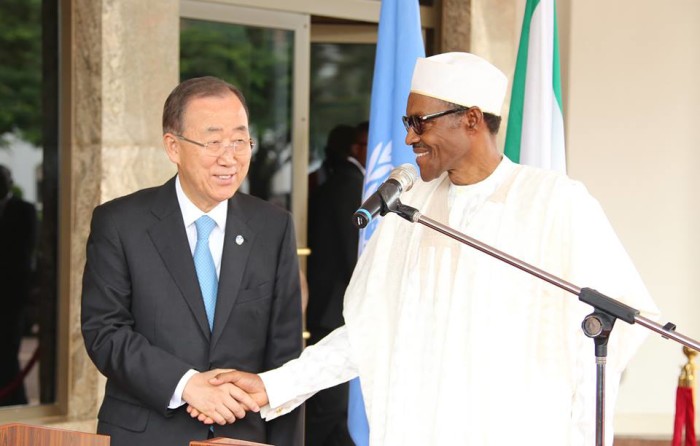
The new report, “Trends in Private Sector Climate Finance,” found that the private sector had made significant strides in response to the challenge posed by climate change since the 2014 Climate Summit in New York, where a range of finance sector including leaders from banks, pension funds, insurers and asset managers announced a series of high-profile commitments and targets to increase climate finance.
The report argues that the private sector has led the effort so far, but that now it is time for the policy makers to take action in order to accelerate the pace of private sector investment and engagement.
The report was presented to finance ministers at a special gathering in Lima, Peru that was jointly convened by France and Peru at the margins of the Annual Meetings of the World Bank Group and the International Monetary Fund. It is a major milestone meeting, coming just over a month before countries meet in Paris to conclude a universal climate change agreement.
According to the new report, not only are most of the commitments made by the private sector at the Summit on track to being realised, moreover, hundreds of billions of dollars have been invested since the Summit to support low-carbon and climate-resilient investments in all parts of the world.
The increasing drive by the private sector, in both developed and developing countries is one of a series of trends that will help reduce emissions and improve climate resilience while providing energy, reducing air pollution and delivering a host of other benefits.
The report lists five inflection points that are signaling long term shifts. In addition to direct investments by the private sector, there has been the creation and expansion of the green bond market, which will issue between US $50-70 billion for climate finance in 2015. Other shifts include: the increased application of internal carbon pricing by companies that will determine investment opportunities; increased concern around the activities of carbon-intensive assets and companies; and the sustained scaling up of efforts by the insurance sector to respond to the climate impacts that are already locked in.
The report also highlights that despite these long-term signals, serious gaps remain. Low-carbon investments remain insufficient to put the world on a less than 2°C degree pathway, particularly in the developing countries, despite a finding that investment in renewables in emerging and developing countries are outpacing that of OECD members.
While the public sector has a vital role to play to help the world reorient itself to a low-carbon, climate-resilient future, the report concluded that the bulk of the financing and insurance driving the much needed transition will be provided by the private sector.
UN Secretary-General Ban Ki-moon told the 70th Session of the UN General Assembly in September that “Climate finance will be crucial,” and he urged developed countries to meet the agreed goal of $100 billion per year by 2020.
The report does not address the ongoing negotiations within the UNFCCC as to what constitutes climate finance or on what should be counted towards the goal of mobilising $100 billion a year by 2020 to address the needs of developing countries. Rather, it provides details on the progress made on the commitments and targets set by the private sector and the changes in the financial markets that are emerging.
The report states that the private sector has emerged more fully as a partner since the 2009 Climate Conference in Copenhagen. Action in the finance sector coalesced, and received a substantial boost, at the 2014 Climate Summit, which was “born of a recognition that the UN itself needed to change in order to facilitate the economic transition,” and aimed to bring together all actors with a role in addressing climate change to catalyse creative ideas and engender new partnerships.
UNEP: Aligning global finance with sustainable development
A new United Nations Environment Programme (UNEP) report released at the International Monetary Fund (IMF)/World Bank Annual Meetings holding in Lima, Peru shows how to harness the assets of the world’s financial system for sustainability.
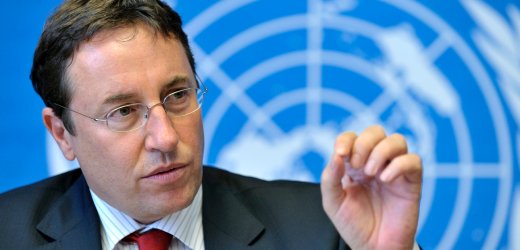
The key findings are that:
- A ‘quiet revolution’ is underway as financial policymakers and regulators take steps to integrate sustainable development considerations into financial systems to make them fit for the 21st century.
- Momentum is building and is largely driven by developing and emerging nations including Bangladesh, Brazil, China, Kenya, and Peru, with developed country champions including France and the UK.
- Amplifying these experiences through national and international action could channel private capital to finance the transition to an inclusive, green economy and support the realisation of the Sustainable Development Goals.
These are the core findings of a two-year Inquiry by the United Nations Environment Programme, summarised in a new report, The Financial System We Need. Commenting on the release:
Achim Steiner, UN Under-Secretary-General and Executive Director of UNEP, said: “UNEP’s Inquiry has for the first time compiled and analysed inspiring initiatives from across the world that seek to better align the financial system with sustainable development, showing that there is much to be learnt from the developing world.
“We now need to raise the level of ambition and cooperation to ensure that the heartland of the global economy, the financial system, can evolve to serve its core purpose of growing and sustaining the real economy. UNEP’s report opens a new chapter by setting out how such an evolution can be achieved.”
Also speaking at the launch, Yi Gang, Deputy Governor of the People’s Bank of China, said the UNEP Inquiry report “delivers a vision of embedding sustainable development into the core of financial and capital markets. It should be a very useful guide and reference for many governments, financial institutions and international organisations in thinking about how to advance green finance.”
Yi praised UNEP’s contribution to the joint study with China’s central bank on the country’s green financial system, and said that “we have benefited significantly from UNEP’s vision of sustainable finance as well as its analysis on international experience,” and “are looking forward to continuing this partnership with UNEP in the future.”
Dr Atiur Rahman, Governor of the Bangladesh Bank, and a member of the Inquiry`s Advisory Council, speaking at the launch, said: “For the first time, the Inquiry has mapped the many innovations around the world seeking to ensure that the financial systems serves its purpose of financing inclusive, green development.”
John Lipsky, former first Deputy Managing Director of the IMF and a member of the Inquiry`s Advisory Council, said: “Reforming the financial system remains unfinished business – we have stabilised the system, but have a long way to go in designing a financial system that meets the needs of sustainable development.”
Murilo Portugal, the President of Brazil`s banking association, FEBRABAN, and a member of the Inquiry`s Advisory Council, “The Inquiry has catalysed awareness of the need to align financial markets to sustainable development, and highlighted practical pathways to improving such an alignment.”
Naina Kidwai, who is Chairman, HSBC India, Director, HSBC Asia Pacific, and a member of the Inquiry’s Advisory Council, said: “Too often the financial system and sustainable development have been tackled in separate silos. The Inquiry has shown for the first time how to systematically connect the dots, demonstrating practical ways in which we can mobilise the scale of capital needed in emerging markets, particularly for clean energy and clean water.”
Sharan Burrow, General Secretary of the International Trade Union Confederation (ITUC), noted: “The UNEP Inquiry is a valuable contribution to help reframe the financial system which is essential for a socially just transition to a low carbon economy.”
Henri de Castries, Chief Executive of AXA, one of over 40 partners of the Inquiry, stressed: “I welcome the Inquiry, as only a financial system with a sustainability orientation serves the economy and society, and so provides a sound foundation for fostering the long-term orientation of finance.”
Rachel Kyte, Vice President and Special Climate Envoy, World Bank Group: “The UNEP Inquiry has uncovered a new generation of policy innovations that aim to ensure the financial system serves the needs of inclusive, environmentally-sustainable, economic development. Its findings are an important input in advancing a new generation of financial system reform and support the delivery of our most important sustainability goals, and could play an important role for implementing the results of the forthcoming Paris climate talks.”
Highlights from ‘The Financial System We Need’ report from the UNEP Inquiry
The UNEP Inquiry into the Design of a Sustainable Financial System was established in January 2014 with a mandate to advance policy options that would improve the effectiveness of the financial system in supporting sustainable development.
Supported by a high-level Advisory Council of financial leaders, the Inquiry has looked in-depth at practice in more than 15 countries as well as across key segments of the financial system, such as banking, bond and equity markets, institutional investment, insurance as well as monetary policy. To reach its findings, the Inquiry has worked with central banks, environment ministries, international financial institutions as well as major banks, stock exchanges, pension funds and insurance companies.
The Inquiry has identified five types of measures that are being introduced by financial rule-makers:
- Enhancing market practice through better disclosure, clearer responsibilities and improved product criteria.
- Harnessing the public balance sheet, through fiscal incentives, public financial institutions and central bank action
- Directing finance through policy measures, such as priority sector lending, legal requirements and liability regimes
- Transforming financial culture, through capacity building, reformed incentives and market structure
- Upgrading system governance, through guiding principles, regulatory mandates and performance measurement.
In total, the Inquiry found over 100 measures that are already in place, including:
- China, a portfolio of 14 distinct recommendations to advance China`s green financial system, covering information, legal, institutional and fiscal measures
- France, new disclosure requirements on climate change have been introduced for institutional investors as part of the country’s energy transition legislation
- Kenya, has advanced financial inclusion through scaling of mobile based payment services, which is now also supporting green financing
- Peru, new due diligence requirements have been introduced for banks to help reduce social and environmental externalities.
- USA, emphasises fiscal measures to accelerate green finance, and had made significant advances in disclosure and investor action.
The Inquiry`s report presents a Framework for Action that includes a toolbox of nearly 40 different measures, a set of five policy packages across banking, bond and equity markets, institutional investors and insurance, and a prioritised set of 10 next steps to promote international financial cooperation.
Nations move to stop decline of vultures
A further 18 birds of prey species have been listed at an international meeting of government representatives and experts this week in Trondheim, Norway. Seven of these species under threat are critically endangered according to the IUCN Red List.

The 2nd Meeting of the Signatories of the Memorandum of Understanding on the Conservation of Migratory Birds of Prey (Raptors MOU) was held 5 – 8 October in Trondheim at the invitation of the Government of Norway. The Raptors MOU was concluded under the Convention on the Conservation of Migratory Species of Wild Animals as a special instrument to address threats to these species.
Countries agreed to list twelve vulture species, including the Hooded Vulture, White-rumped Vulture and the Lappet-faced Vulture, to Annex 1 of the agreement as a response to the current African Vulture Crisis. Vultures are suffering serious declines caused by illegal take and trade, and poisoning with toxic chemicals, which present serious risks to human health too.
CMS Executive Secretary Bradnee Chambers said: “Vultures are nature’s garbage collectors. These scavengers prevent the spread of disease and thereby directly protect human health. In order to prevent yet another crisis, we must preserve animal and public health in Africa by maintaining this unique self-purification capacity of Nature. In Norway, countries agreed this week on a coordinated international response led by the CMS Raptors MOU to tackle the African Vulture Crisis.”
Efforts to stop the dramatic decline of vultures were supported by Iran which announced its decision to ban diclofenac, a drug which almost wiped out vulture populations in India.
The development of a Multi-Species Action Plan for all Old World Vultures was initiated to halt the decline of vulture populations. The initiative to develop priority species action plans via the Raptors MOU is also included in CMS Resolution 11.14 on Migratory Birds and Flyways.
Illegal killing, taking and trade, conservation action for the Egyptian Vulture, as well as national and regional raptor conservation strategies were on the agenda.
The Chair of the meeting, Øystein Størkersen, Norway, said: “There is room to be more proactive, especially in specific fields, such as involving different sectors in addressing the key threats to migratory raptors. We shall reach our goals by building the palace stone by stone.”
Countries that have signed the MOU have agreed to work together to better protect vultures, eagles, hawks, falcons and owls. At the meeting, Comoros added its signature bringing the number of Signatories to 53.

